|

|
THE
FLOW BENCH |
The flow bench is not a novelty: the first experiences since the Thirteens are documented by German Prof. Eberan Von Eberhorst that tested cylinder heads (from 2 to 7 valves) to flow bench, to determine its best efficiency. This happened in 1940-1941. The working principle is that to pass some air in the intake ducts or exhaust creating a fall of pressure before and after the duct (the indicated test pressure). The flow, measured every 1course that passes in the duct in these condition is measured for every 1 mm of valve lift up to the maximum makes a diagram: If the air flow increases, the engine performances increases too.
The results are very important and interesting because
GUZZI FALCONE CYLINFDER HEADS ARE NEVER TESTED AT FLOW BENCH
BEFORE. These results are published in our "MANUALE
DI INGEGNERIA D'EPOCA" VOLUME 2 ("The Manual Of Classic engineering").

The
flow bench "Flux 800", by Soft-Engine
WATCH
THE VIDEO!
MOTO
GUZZI FALCONE CYLINDERS HEADS TEST AT FLOW BENCH!
FOR
THE RIRST TIME IN THE WORLD!

|

|
TESTED
CYLINDERS HEADS |

Tested
Moto Guzzi cylinders heads
Three Guzzi Falcone cylinder heads are tested in comparison: we gave them conventional names: "Head P", "Head S", "Head AS". These three heads are original Motorbikes Guzzi Falcone but they have a different intake valves and exhaust configuration. Besides they has some different intake ducts: an iron duct for "Head P" (conventional name: "FE1"), an aluminum duct for "Head S" (name: "AL1") and an iron duct for "Head AS" (name "FE2", different from "FE1").
Later, a particular iron and straight intake duct, (name "FE3") was tested. All and three the heads have the same exhaust pipe, along 600 mm. The three heads have been tried without ducts firstly and then with the original ducts, both in aspiration and in exhaust phase, (valve lift range: 1 to 14 mm, test pressure 400 mmH2O).
But obviously we made some interesting experiments, exchanginge the valves among head "S" and "AS" or varying the valves diameters in the "Head P" and comparing the results.
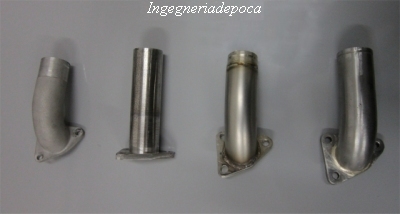
Intake
ducts. From left to right:
Duct
"AL1", "FE3", "FE2" e
"FE1".
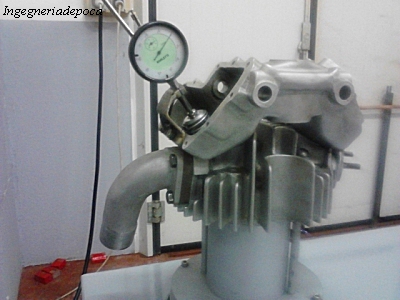
The
"Head S" with duct "AL1", aluminium (original for this
head).
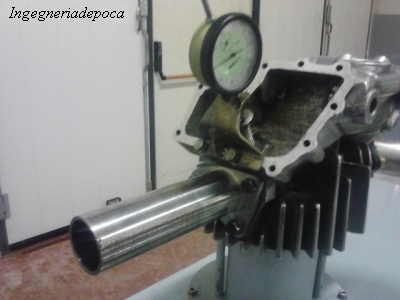
The
experiment n°1: the"Head P" with a stright iron duct
("FE3").
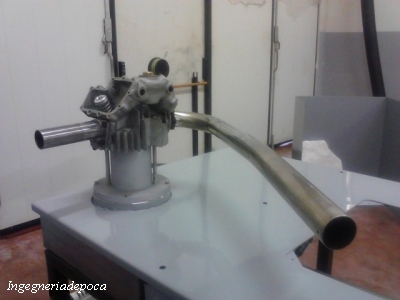
The
"Head AS" with exhaust duct.

|

|
CARBURETTORS TESTED AT FLOW BENCH |
Some "Dell'Orto" carburettors (34 and 36 mm) have been connected to the intake duct during "Head S" flow test, comparing the results both with original "Head AS" and the one with the valves exhanged with "Head S. Here are some images of this test:
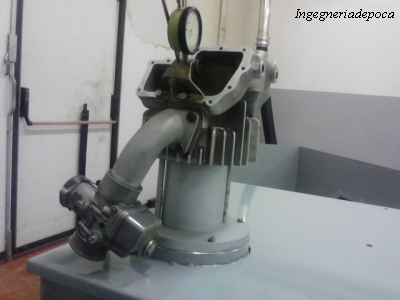
The
"Head S" with carburettor "Dell'Orto" ( 34 mm).
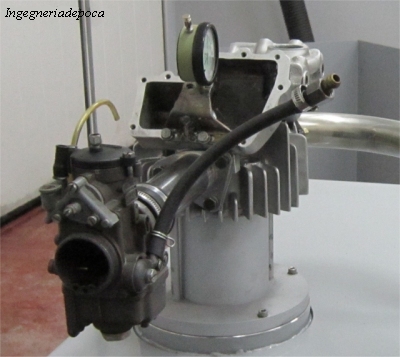
The
"Head S" with carburettor "Dell'Orto" (36 mm).

|

|
TESTED
SILENCERS AT FLOW BENCH |
During
exhaust test, some silencers have been connected to "Head AS",
as shown in the picture:
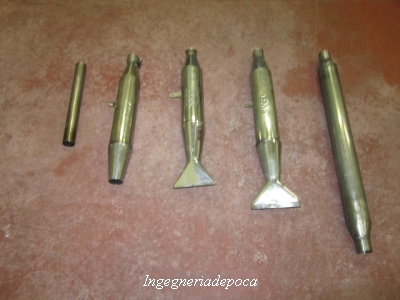
The silencers for "Head S" during tests. From left to right:
a simple prolongs, the "Silencer 3", the "Silencer 1", "Silencer 2" and
"Silencer 4",
this one made in "Ingegneria D'Epoca"
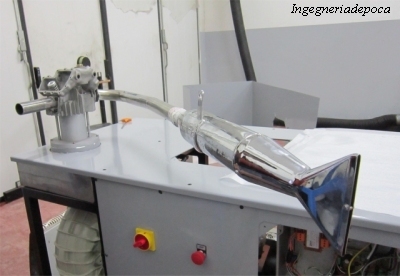
The
"Head AS" during exhaust flow test with "Silencer 01"

|

|
THE
IRON CYLINDER HEAD FLOW BENCH TEST |
Here
some photos for iron Guzzi cylinder heads new test at flow bench:
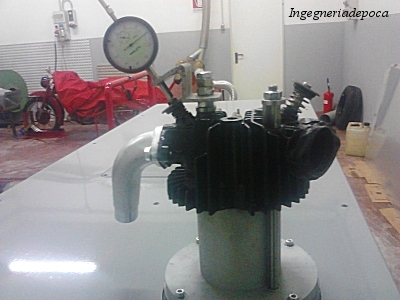
The
head "V" model (iron).
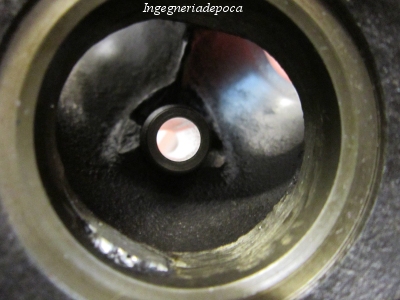
A
detail of the "Bitubo head

|

|
THE
RESULTS |
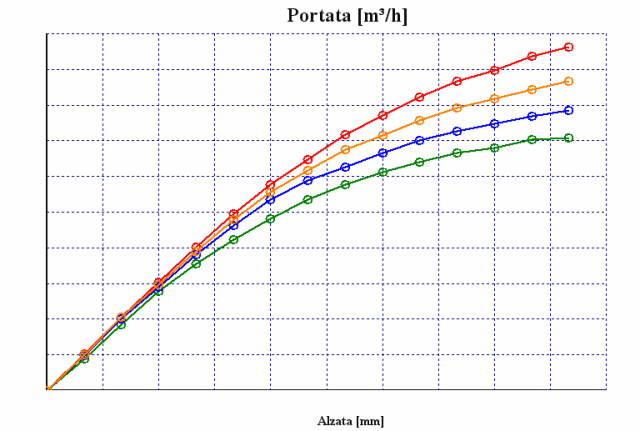
A
sample of diagram: inteke tests for "Falcone
AS cylinder head"
The results of these
UNPUBLISHED FALCONE CYLINDER HEADS TESTED TO THE FLOW BENCH has been very interesting: they has been published in the
"MANUALE DI INGEGNERIA D'EPOCA" VOLUME 2
("The handbook of Classic Engineering") with
a lot of graphs and charts.
|